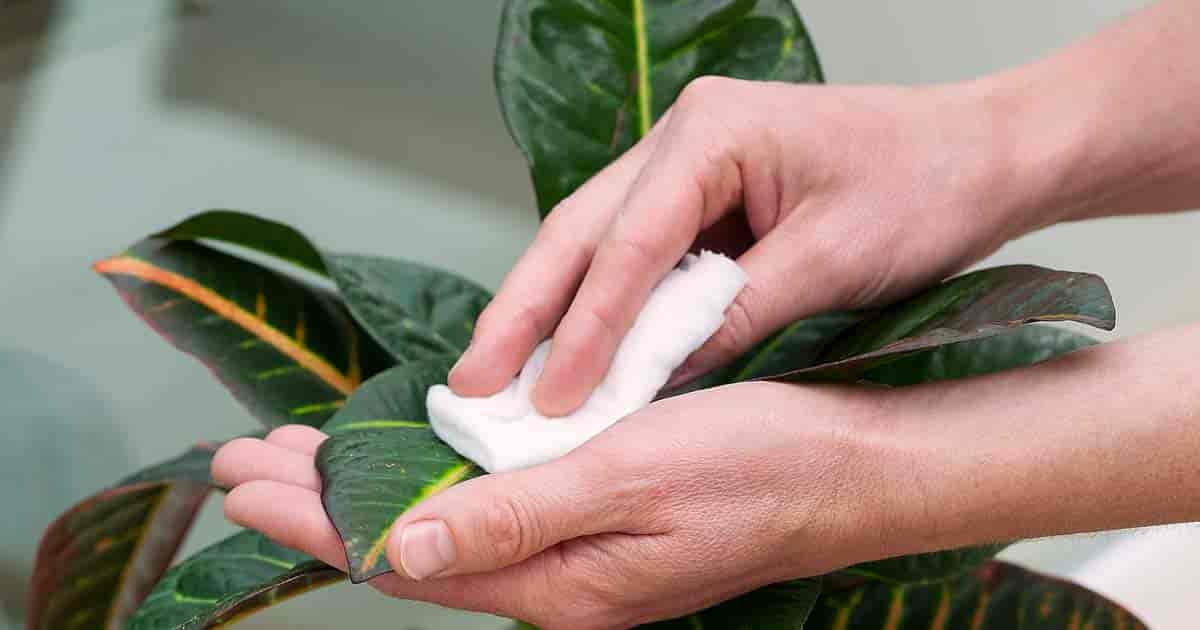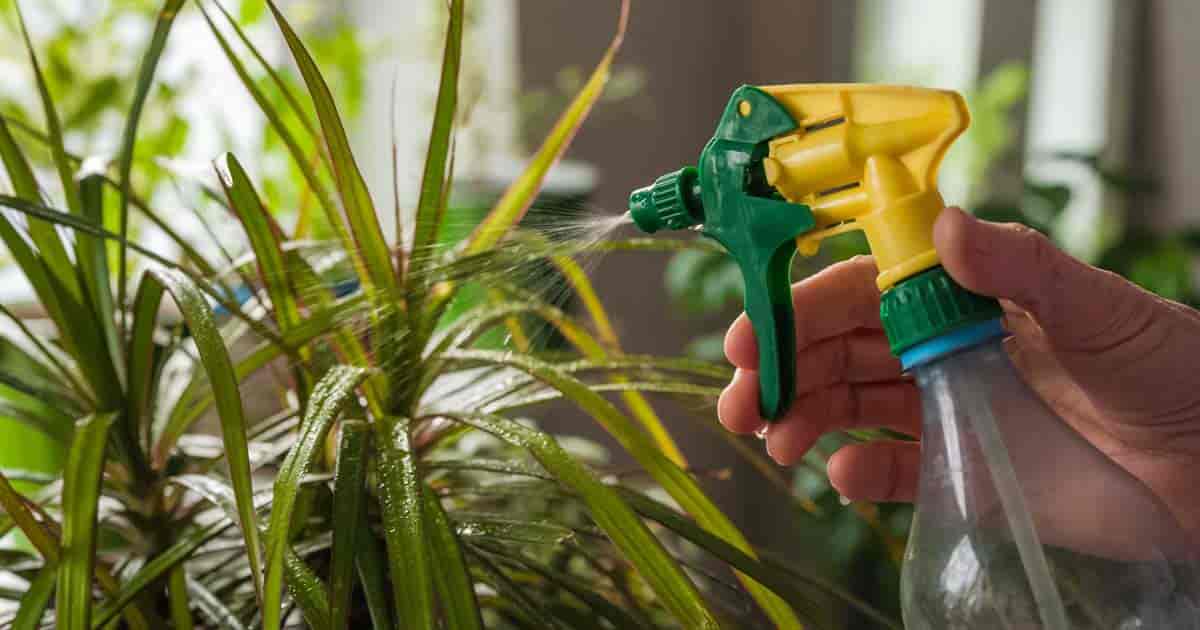Your cart is currently empty!
Tips On How To Clean Leaves On Houseplants
Houseplants are a great way to spruce up your home and require relatively little maintenance.
You may be surprised to learn that grooming your plants can be one of the most time-consuming parts of caring for them, and with good reason. Proper grooming takes time but keeps plants healthy and greatly enhances their appearance.
Furthermore, the time you spend cleaning, trimming and shaping your plants provides you with valuable information as to their overall health. When you clean plant leaves regularly, you are more likely to catch pests and signs of illness early, and early detection makes treatment and cure easier and more successful.
In this article, we will discuss the importance of good plant grooming and share valuable tips to help you keep your plants tidy and healthy. [source] Read on to learn more.
Buying Houseplants At The Garden Center
Growers try to clean the foliage but are not always successful. This is why sometimes plants arrive with a noticeable “white stuff” on the leaves.
Cleaning Plant Leaves – Keeping Houseplants Free of Dust
Over a period of time indoors plants will accumulate dust. Keeping the leaves of your plants free of dust and contaminants makes them look more attractive.
It also helps them stay healthier. Clean leaves help air-purifying plants absorb more light and can perform photosynthesis more efficiently. They can absorb foliar fertilizer more completely and efficiently, as well.
When cleaning plants, it’s important to use gentle, effective methods that remove contaminants without harming the plants.
You can use a commercial leaf cleaning product and follow the instructions on the packaging, or the occasional use of light soapy water to clean, followed by a plain clear water rinse should be fine to keep your plants pest-free and clean.
To clean the leaves of smooth leafed plants, you will need:
- A spray bottle of cleaning product
- A soft, clean cloth or paper towels
Cleaning is simple.

Spray the leaves of your plant with your cleaning solution and then gently wipe clean with your soft cloth or paper towel. Be careful to apply just the right amount of pressure and resistance to remove dust and contaminants without damaging or accidentally removing the leaves.
Be prepared, plants like a Hoya plant, jade plant, snake plant and spider plant chlorophytum comosum can take some time to clean. Make sure you change the wipers regularly.
No Scrubbing!
Always work from the base of the stem toward the tip of the leaf. With a “wiper” in both hands you can do both sides of the leaf at once with a soft cloth or paper towel.
Plants with pronounced leaf hairs (African Violets) won’t be able to be cleaned this way. Clean individual leaves with a dry, soft terry washcloth. Furry leaves may also be very lightly brushed with a soft paintbrush or makeup brush. Again, work from the base of the stem toward the tip of the leaf.
Perform this kind of leaf-by-leaf cleaning once or twice a month. In between, use lighter methods to keep dust off. For smaller plants, you can use a soft feather duster to displace dust and keep your plants refreshed between thorough cleaning sessions.
If you have large plants to clean, (Ficus benjamina, Fiddle-leaf fig) you may wish to use a leaf blower (yes this method is used in shopping malls) to blow away dust and debris and then spray the plant thoroughly with a mild solution of insecticidal soap and water.

Spraying the Red-Edge Dracaena with a leaf cleaner
Be sure to do this early in the day, in an area with good air circulation so that the plant can dry entirely before dark.
NOTE: Do not use of any type of food product to clean plants can promote a great place for pests to live. (Mayonnaise has been suggested online)
If you have plants in the kitchen area, watch out for grease that can accumulate on the leaves. These plants will need to be cleaned more often.
If you have plants in the kitchen area, watch out for grease that can accumulate on the leaves. These plants will need to be cleaned more often.
Recommended Don’ts On Cleaning Plant Leaves
- Don’t use a plant shine – they can clog the pores plants use to “breathe” and damage some plants like ferns.
- Don’t spray the flowers – this can reduce the longivity of the blooms
- Don’t “scrub” leaves – you can damage and bruise the leave surface
Keep The Surface Of The Soil Clean
After you have finished cleaning your plant’s leaves, check to be sure there are no dead leaves, fallen blossoms, fruit or other debris on the surface of the soil. Clear away any debris that may have accumulated and refresh soil as needed.
Trim Off Diseased & Damaged Leaves
Plant leaves may be damaged by the environment or by pests. Sometimes they fade or become blighted. Sometimes they get old, change colors and die. It’s a good idea to keep these compromised leaves trimmed away to help your plant present a better appearance and to prevent problems with disease and pests.
Our Recommended Natural Pest Control Solutions For the Home and Garden
For more info on these recommended products, read our detailed review here.
Leaves that have died or turned completely yellow should be snipped off at the base using sharp, clean scissors, shears or pruners. While it is possible to pinch or pull damaged leaves off by hand, it is always wisest to use a sharp, clean implement to avoid further damage to the plant.
Leaves that have small damaged spots or edges can be carefully trimmed to remove the damage. To do this, use very sharp scissors and trim in a way that maintains the natural shape of the leaf. Don’t trim into the healthy part of the leaf. Instead, leave a fine margin of the damaged area.
Deadheading Is Important
Flowering plants benefit by being kept tidy – deadheading. Always cut off spent blossoms to improve the appearance of the plant, encourage more blooms and help prevent disease, fungal infections, and pest infestation.
If you have a plant that tends to shed pollen (example – peace lily), you may wish to remove the anthers (pollen-bearing parts) as soon as they emerge. Doing this keeps the plant tidy, helps the flower last longer and is beneficial to people who are allergic to pollen.
Some Flowers Are Just Messy
There are some types of indoor plants, such as Dracaena, that drip sticky nectar from their blossoms. While this type of plant does not often flower, when it does it’s a good idea to remove the flowers right away to avoid a mess.
In the event, your plant produces fruit, be sure to keep the fruit picked to avoid a mess. Indoor palms, plants such as Aglaonema and Ficus are especially prone to producing fruit (rarely indoors), which is nice looking initially but becomes very shabby looking as it ages.
If it is allowed to stay in place long enough to decay, it will attract pests and may fall and cause clutter around the plant.
Trim & Shape Hanging Plants
All plants need occasional pruning to remove dead leaves and guide the plant into an appealing shape. This is especially true of hanging plants and vines.
Keep an eye on your plants and trim away unruly or intrusive tendrils as needed. Examine your plants with a critical eye at the time of your monthly or bi-weekly cleaning and take care of any trimming and shaping that needs to be done at this time.
Always use clean, sharp scissors or shears to trim, shape, deadhead or prune your plants.
This video gives good tips on cleaning and trimming your plants.
Floppy Plants Need Support
Plants that grow tall or have heavy flowers tend to topple over. When this happens, you’ll need to use a plant stake to provide support. Natural bamboo poles make good plant stakes.
Buy them in longer lengths and then cut them down to the perfect height for your plant. Use a serrated knife or a medium-toothed hand saw to accomplish this task. Be sure to leave enough length (4-6”) to be able to push the stake deeply into the soil to provide firm support.
Cut the stake to the height of the plant with 4-6 inches to spare. Push the stake into the soil close to the plant. Be careful not to damage the plant or its roots. Attach the plant to the stake carefully with thick jute or twine.
Tie it loosely so as not to constrict or damage the plant’s stems. Don’t use thin string or wire as this may damage your plant.
You may need to attach the plant to the stake in several places to straighten and support it correctly. When done, step back and look at the plant. Adjust and arrange the foliage to help conceal the stake.
Good Grooming Keeps Your Plants Healthy & Pest-Free
A well-groomed plant is a happy, healthy plant. [source]
When you invest the time in cleaning, trimming and shaping your plants, you will become very familiar with every one of them.
If anything goes wrong, you will know right away, and you’ll be able to take actions to deal with any:
- Illness
- Pests
- Lack of nourishment
… that may be plaguing your plants. Periodic cleaning will help your plant live and grow longer indoors and help remove pests. Follow the advice presented here to keep plants well-groomed.
Share with Family and Friends
Featured Authors
Visit a Botanical Garden For Unique Experiences.
Comments
Logging in to comment gives you more features, but it is not required.
Subscribe
0 Comments
Oldest












